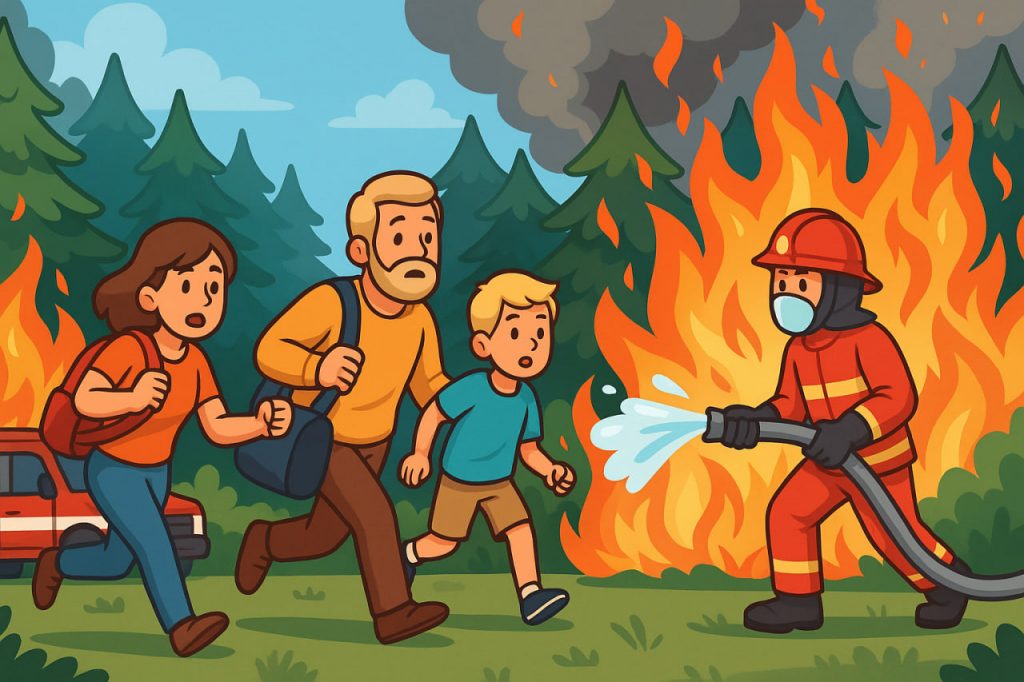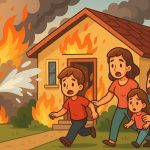Forest fires are powerful natural disasters that spread rapidly and threaten both nature and human life. They can be triggered by lightning, extreme heat, or human negligence. Surviving a forest fire requires quick decision-making, knowledge of fire behavior, and preparation in advance.
1. Stay Informed and Alert
- Monitor weather reports and fire warnings if you live near forests.
- If authorities announce evacuation orders, follow them immediately.
- Recognize early signs: smoke, the smell of burning, or unusual animal movements.
2. If You Spot a Fire Early
- Call emergency services to report the fire.
- Do not try to extinguish large fires on your own. Small campfires, however, should be smothered with water and soil if manageable.
3. Evacuation Safety
- Move away from the fire path, ideally downhill or against the wind (fires spread uphill and with the wind).
- Use roads, rivers, or clearings as escape routes. Avoid dense vegetation.
- If possible, cover your nose and mouth with a damp cloth to avoid smoke inhalation.
4. If Trapped by Fire
- Look for natural firebreaks: rocky areas, riverbeds, or areas with little vegetation.
- Lie flat on the ground and cover yourself with soil or non-flammable material if flames are close.
- Avoid canyons or narrow valleys where fire and smoke can intensify.
5. After Escaping the Fire Zone
- Report to authorities your location and whether you saw others in danger.
- Seek medical help if you inhaled smoke or sustained burns.
- Stay away from the burned area until it is declared safe.
6. Prevention and Preparedness
- Never leave campfires unattended, and always extinguish them fully.
- Avoid throwing cigarette butts or glass bottles in dry areas.
- Prepare an emergency kit with water, masks, and first-aid supplies if you live in fire-prone regions.
Conclusion
Forest fires are fast-moving and unpredictable. The best way to survive is to stay informed, evacuate quickly, and avoid risky behavior. Prevention is just as important as survival, since most forest fires are caused by human negligence.
Glossary
- Firebreak – A gap in vegetation that slows or stops fire spread.
- Smoke inhalation – Breathing harmful gases produced by fire.
- Evacuation order – Official instruction to leave a dangerous area.
- Emergency kit – Supplies prepared for use in disasters.
- Fire path – The direction in which a fire spreads.


